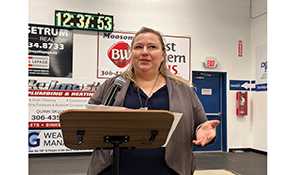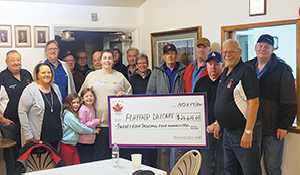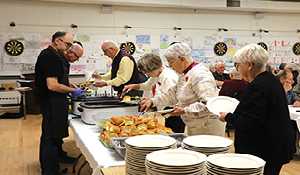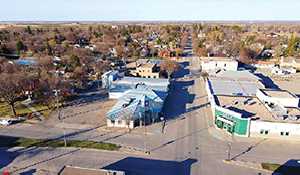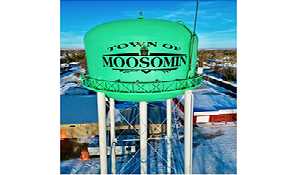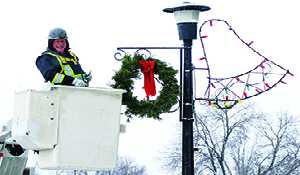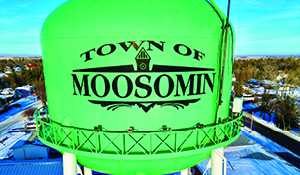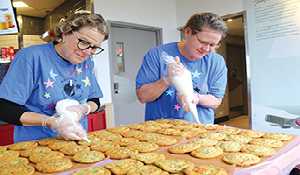The Grizzlies
Esterhazy’s Russ Sheppard talks about the movie, and how lives were changed
June 4, 2019, 6:51 am
Kara Kinna
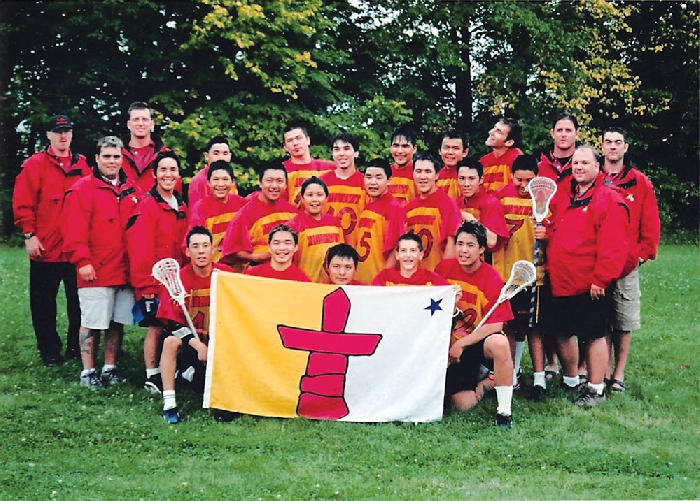

On April 19, Mongrel Media released the film “The Grizzlies” in Canadian theatres. The film, directed by Miranda de Pencier, is based on a true story, and depicts a youth lacrosse team that was set up to help combat an epidemic of youth suicide and other serious social issues in the community of Kugluktuk, Nunavut.
The film premiered at the 2018 Toronto International Film Festival and has won numerous awards. It is also critically acclaimed by both critics and audiences, and has been widely praised for using mostly Inuit actors (many of them local) as well as Inuit crew in the development of the film. It has also been praised for tackling social issues in the north head on, and for depicting a story of resilience, hope, strength, and reconciliation that has struck a deep chord for many viewers, and for many of the people living in the north.
However, what many people may not know is that one of the key characters in the film, Russ Sheppard, the young teacher who helped set up the lacrosse team, is a local.
Sheppard grew up in Esterhazy, and lived there until he went to university. He still has family in Esterhazy, and considers Esterhazy his home town.
Sheppard is one of the main characters in The Grizzlies—the young teacher, fresh out of college, on his first teaching job, who comes face to face with some of the staggering problems faced by the people and the students in Kugluktuk.
Sheppard was instrumental in getting the youth lacrosse team started in Kugluktuk—something that resulted in the teen suicide rate there dropping to zero.
But don’t call Sheppard a hero. In an interview with the World-Spectator last week, Sheppard said he would not have endorsed The Grizzlies if it had shown him as a hero come to save the day for the kids in Kugluktuk. It’s the kids who are the heroes, he says. It’s the kids who had insurmountable challenges to overcome, and who overcame them in ways he couldn’t imagine.
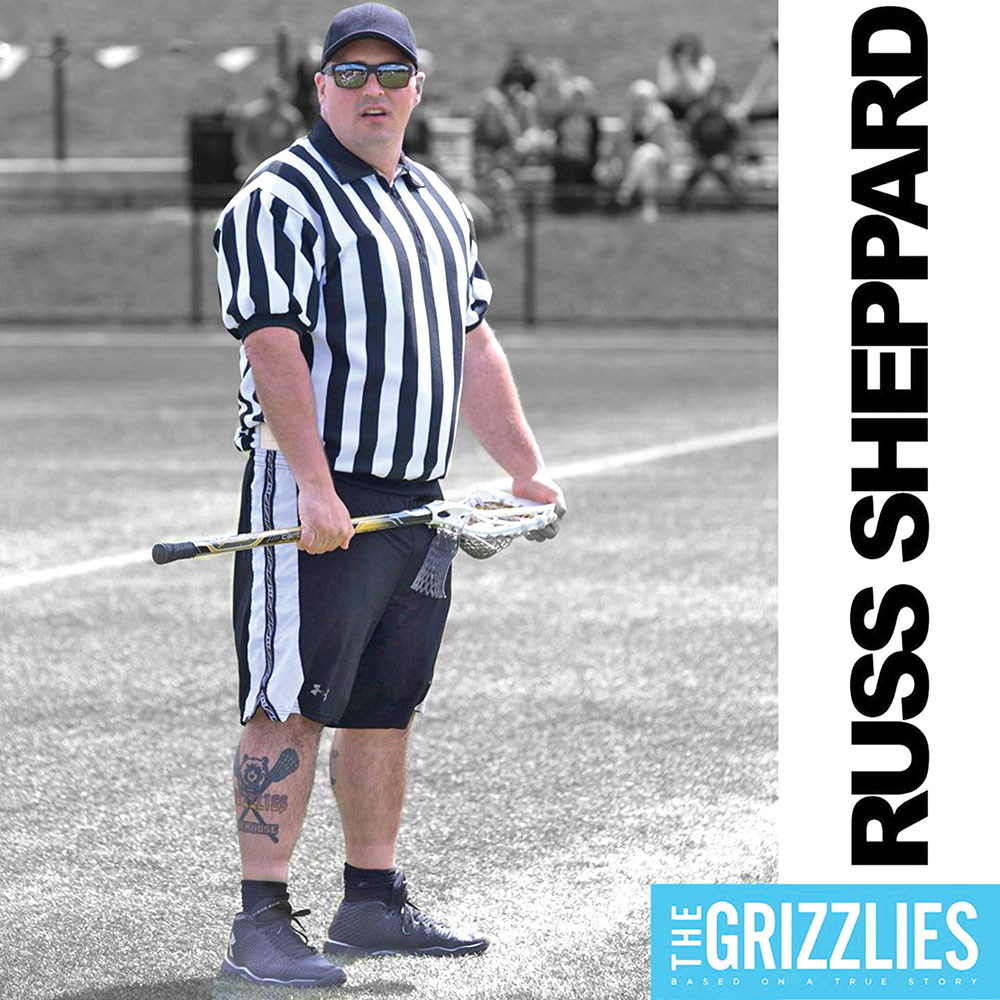

Teaching up north
Sheppard says he became a teacher in Kugluktuk the way any young teacher gets a job—the job was open and it sounded interesting.
“I went to Brandon University and then I went to the University of Saskatchewan for most of my undergrad education. I obtained a Bachelor of Education and had sent out resumes through a couple of different education networks and had an interview to teach at Kugluktuk, Nunavut,” he says. “It was a really interesting prospect. I decided to try it out for a year and one year became seven.
“I was brand new, 23 years old. It was an amazing opportunity.”
Once Sheppard got to Kugluktuk he says he noticed that the kids were great kids, but they weren’t into school.
“Once I got into town, the first thing I noticed is that part of the culture is the caring people. The Inuit people as a whole are really caring and helpful and non-confrontational in many ways,” he says. “There’s obviously some abuse problems that happen, and they happen in any town. It doesn’t matter if it’s a northern town or in Esterhazy, or whereever. It’s a smaller community and there’s a high rate of substance abuse and social issues. There’s obviously a very direct connection to the residential school process that happened.
“I noticed very quickly that the students weren’t great students but they were great kids. In the school atmosphere they were quite a bit different than they were outside of school.
“We follow the Alberta curriculum. The traditional system of schooling is not really built for that culture and for the Inuit people in that town. I feel like a lot of the issues we had in school were because the school days are a very rigid day and the school calendar follows the southern calendar. The school curriculum was not relevant to a lot of northern information and northern learning.
“I felt like the school culture itself wasn’t a great culture. It was very typical. If you don’t come to school and you’re under 16, we’re going to get a truancy officer, and then it’s breaking the law. Well, that’s a deterrent system and I think we are past the idea that deterrent systems on their own are effective. I think it just wasn’t built for kids to be successful.”
How were the students responding to this system?
“The attendance was low,” says Sheppard. “The drive to be in school was nonexistent. Graduation rates were low. We would have days in the spring where we would have more teachers than students.
“Part of that is because the culture, in the spring, after the hard winter, you go out and camp and hunt and get out on the land. So why aren’t we adjusting our calendar to be more reflective of that culture? It’s no different than in Saskatchewan when you adjust the school days for harvest and for seeding. It’s something you should be responsive with.”
Sheppard says he was also witness to a high rate of social problems among the kids, and to teen suicide.
“There is a high rate of suicide in Kugluktuk and substance abuse with kids. The first year I was there we didn’t have any suicides. My second year we had a lot of issues happen. Four students committed suicide that year. It was a shocking year for me to deal with. Watching and seeing youth create the ultimate sacrifice for mental health issues is a pretty shocking experience to go through. They are good kids, none of them are bad, they are just kids. Maybe they are on a bad path, or not even on a bad path, they are just dealing with other stuff and have no support.”
Needing to make a difference
Sheppard says the lacrosse team was created to try to create a shift in the culture around school at Kugluktuk. He says he knew, if he was coming back as a teacher for a third year, he needed to make a difference.
“We wanted to change the culture of the school,” he says. “When I made the decision to come back for the third year I wanted to commit to building something and doing something different or I would just leave. You don’t come back and just keep doing the same thing over and over, you are going to get the same results over and over. I came back with the attitude that I was going to try to bring some change to the community, but moreso to the school and to create a culture.
“We had a lot of kids that were very kinesthetic, they really enjoyed sports and recreation. We had sports teams running already, soccer, basketball and volleyball, and they were successful. During that summer I introduced lacrosse and the kids really bought into it. I think the physicality of it and some parts of the game really engaged the kids.
“From there the rest is history. We grew really quickly from 10 or 12 kids playing pickup to 80 kids, which is the majority of the population in the school. They loved it.”
Change happens
Sheppard says the school was able to use the lacrosse team as a way to encourage the kids to make positive academic choices.
“We wanted to create a program in which kids could be successful without having to get A-plus averages,” he says. “Some of our kids would never get that. We created two thresholds that they had to meet if they wanted to play on sports teams in our school. If they wanted to play on Team Grizzly they had to be at school four out of five days—so 80 per cent attendance. And you had to put in effort while you were there. These are controllable things, the kids can control that. The effort was monitored through an effort log system, which they had to fill out every Friday. If you maintained a certain average in your journal then you got to practice the next weekend, and if you didn’t then you had to go back to the drawing board.
“What happened is the kids embraced it, because they loved playing all the sports. Once they started to come to school and put in effort they started to become successful academically. Once they started to become successful academically, that brought on more success and that got them more excited about things like graduation.
“We started to do trips with our sports teams and subscribe to things like student exchanges with Saskatoon. Those exchange trips created lots of confidence in the kids because they are now in the south. It’s no different than a Saskatchewan kid going to Toronto—it’s a big deal.
“Were we successful in our lacrosse team? On the field we were, we went to a national championship and we beat Team Manitoba. That was our big claim to fame. We never won a national championship, we won a few games along the way in different capacities. To me the success was that every single one of those kids had earned the right to be there. They had worked really hard and had gone through a lot just to make it there. That success kind of carried over.
“I think the success bred more success. The confidence they built that they could actually achieve some of these things was amazing. I think, in general, we have low expectations for youth. I feel like our expectations for these kids were not out of line, they were really high.
“When the kids started to achieve those expectations they realized the teachers cared about them. They (the teachers) had worked to build a structure and open up doors. Their job was to earn their way through those doors and once they had done that, they realized all the doors they had opened up on the other side.
“The strength that they had within was not celebrated and when I went up north to work with them, the first thing I realized is that these kids have a character that is not normal. They have perseverance and character that is admirable and we have to exploit that, and I say that word in a positive way.”
Sheppard says not only did the teen suicide rate drop to zero after The Grizzlies team was created, it stayed at zero.
“The rest of my years there, after we introduced The Grizzlies program, we didn’t have a student suicide. There were a couple in the community that were older people, but we didn’t lost another student the whole time I was there. It’s what we all wanted. We never sat down and said we need to stop suicide, we sat down and said these kids have all the capability to do what they want and the spin off to that success is that you don’t commit suicide when you are confident in your abilities.”
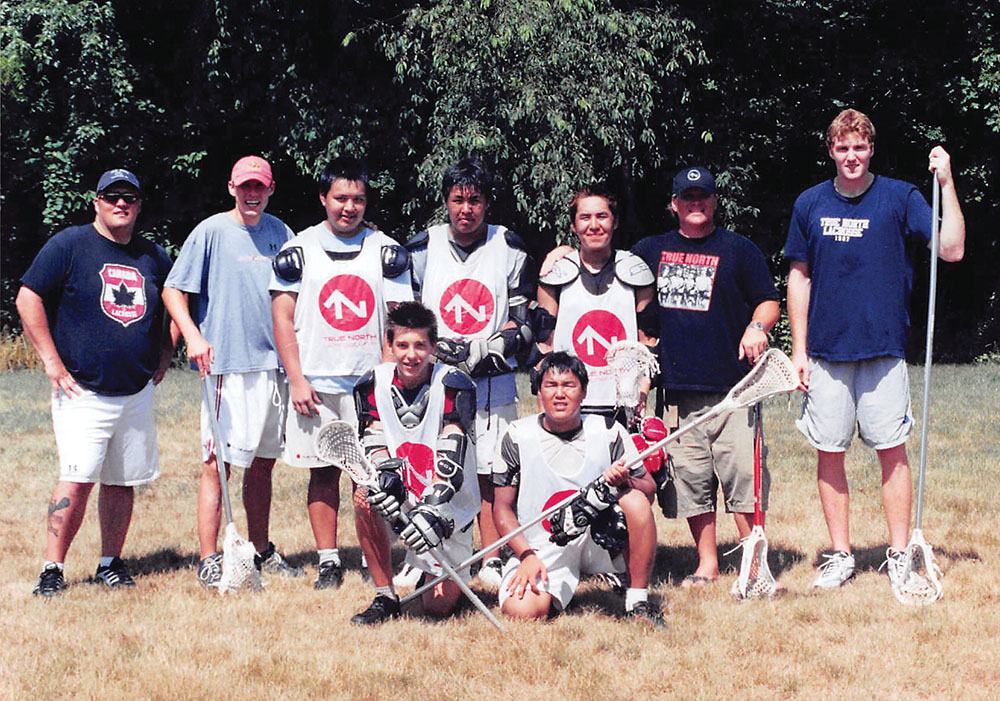

A learning experience
Sheppard says the movie “The Grizzlies” is true to life in showing the students as the true heroes in the story, and not himself.
“If the movie was made to show somehow that I was a hero, I would be very disappointed. For me, I learned a lot more about character and perseverance and what the power of youth from the kids up there. Some of the skills I could never have taught them. We had the easy job of creating doorways and the kids had the hard job of earning their way through them. I think there is zero hero ability from me, I’m just a teacher from Esterhazy that enjoyed working with these kids.”
Sheppard says it was the kids who changed him more than he changed them.
“They created an understanding in my head that there is nothing too big that we can’t work through,” he says. “They came from some pretty unbelievable personal situations and yet they still found a way to make it to school because they wanted to be part of our program. They found a way to graduate.
“I learned two things. From the kids’ point of view I learned that human perseverance is an amazing thing. Personally, I learned that I can really have an impact if I have proper reasoning behind it and if I work hard, then I can also achieve what I want to.”
Movie tackles real issues
How did Sheppard feel when he found out there was a movie being made about The Grizzlies?
“It’s been a process. I signed a life rights deal in 2007, so it’s been 10 or 13 years in the making. I worked closely with Miranda de Pencier the director now, who was the producer at that time, so I’ve got to be quite good friends with her and she’s done an amazing job. I’ve also become quite good friends with the writers too, Moira Walley-Beckett and Graham Yost. I really trusted them to tell the true story.
“If this had come out as some Hollywood Mighty Ducks, white savior movie I would have been disappointed. That’s not what my interviews with them reflected. They honored the story, the north, the kids and their characters. They told really hard, human stories in a very tasteful and respectful way and ensured that the proper message is out there. I think the movie speaks for itself. It’s been critically acclaimed as a positive movie.”
How accurate is the movie?
“It’s pretty accurate,” says Sheppard. “They did an amazing job of finding all sorts of social issues that are very common in the north and creating characters who are real, to show what those issues are there. Overcrowding, high cost of food, spousal abuse, child abuse, homelessness and starvation—these are all issues and they are covered in a very tasteful way, and I think the movie shows we have to work together. We have to break down the color barrier, we have to break down the residential school barrier and work together to find solutions for good, human people. It doesn’t matter what color you are.”
Sheppard says when the movie went to production, he was on the set as an authenticity consultant and the lacrosse director.
He says seeing the movie takes him back to Kugluktuk and day-to-day challenges that were faced there.
“I’ve seen it six times now, but the first time I saw it, it was a bit emotional and shocking,” he says. “I had seen a prototype version but it wasn’t all edited and cleaned up. At TIFF (Toronto International Film Festival), the world premiere, I was sitting with a former student and the writer, Moira, and it’s an emotional journey for me. I know what’s real and what’s not in the movie and I remember those nights and days and I remember those fights. It was really emotional to see that.
“I went to Calgary for a showing and I sat in the back until the end, waiting to do a Q&A and it was the most emotional time I had watched it. I think it was because I didn’t have any of my former students with me. It dug deep in me that almost 20 years ago, to the day, I was getting off the plane up there for the first time, and now that journey and adventure, that I was lucky enough to be a part of, is on the big screen for others to enjoy and be motivated by. It’s pretty overwhelming.”
Sheppard says there is a lot to take away from this movie.
“There are so many messages in it,” he says. “There’s human character and perseverance. If you’re a teacher, it’s about how you can impact students. If you’re a student that’s struggling, it’s about how you can deal with things. If you’re a sports person, it’s about what sports can provide for people.
“But for me, what I hope people take away from it, is what they need at that time. There are going to be people in inner cities watching it that need it to be a certain message, and you’re going to have affluent people in North Vancouver that are going to watch it and need it to be a certain message for them. I think the writers and director did a great job of making it multifaceted so that it can be a lot of messages for a lot of people.”
Where are the real Grizzlies today?
Sheppard says they have moved onto into brighter futures.
“They are all over the place and doing very well for the most part,” he says. “When you watch the movie you will see where they are now at the end. I keep in touch with many of the kids and they’ve got great jobs and families. Mila (Kamingoak), who was one of our volleyball players, is now MLA of that district. Miranda (Atatahak), who is a main character of the movie, is the deputy mayor. Theresa (Westwood) is the head of the education authority. The list goes on and on.”
Sheppard says he still maintains a connection with Kugluktuk.
“Esterhazy is where I grew up and it’s my hometown,” he says. “Kugluktuk is where I learned to be a good citizen and is a secondary hometown for me. I definitely call it home because I did a lot of growing there too.”
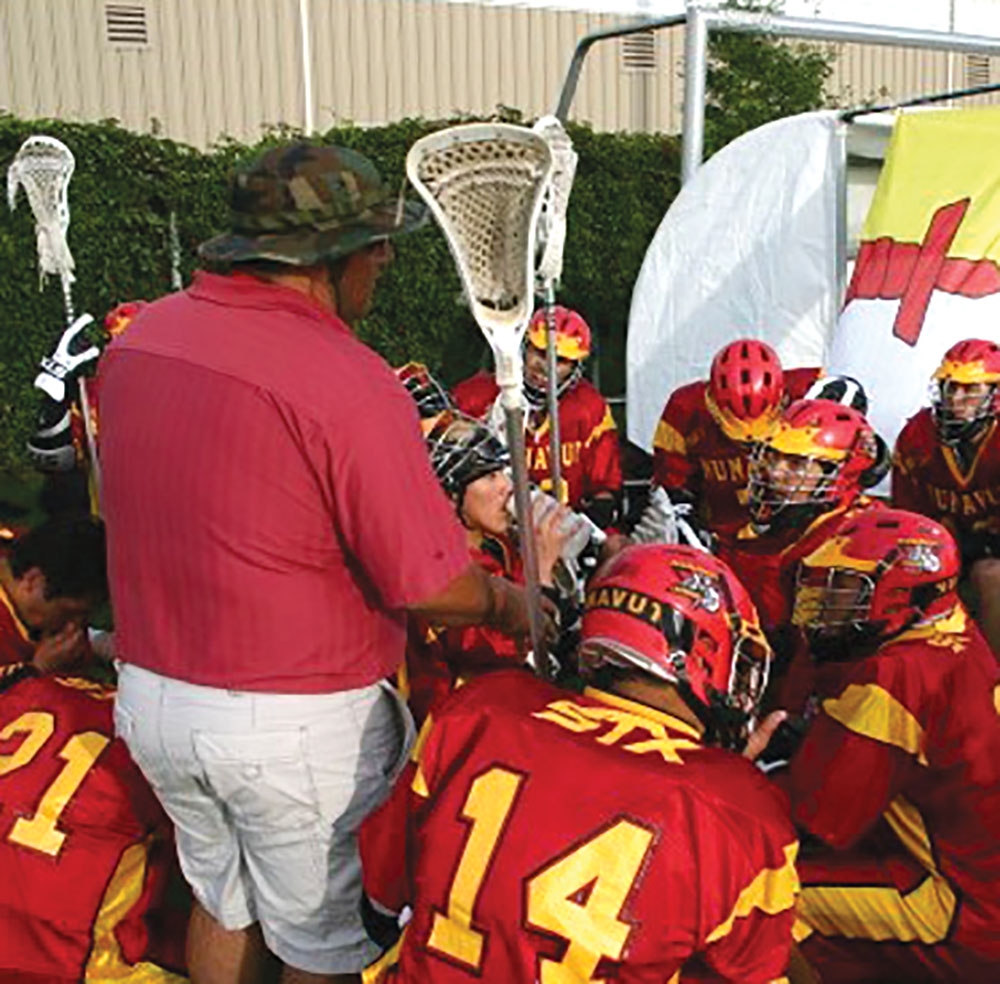

Sheppard flies to Esterhazy for viewing
On Friday, Sheppard, who lives in Cranbrook, B.C., flew to Esterhazy to view the movie at the Maple Leaf Theatre where it was shown on Friday, Saturday, Sunday. The movie will be shown again this Tuesday at 7:15 pm.
After the movie on Friday, he held a question and answer session with the people of Esterhazy.
He says the reaction from his home town has been one of excitement.
“My family is pretty excited. Some came to Edmonton to watch it and some went to Calgary and Regina. A group of people that I graduated high school with went and saw it in Regina and sent me really nice messages,” he says.
“I think a lot of people didn’t really know what to expect. The support has been great.” Tweet
